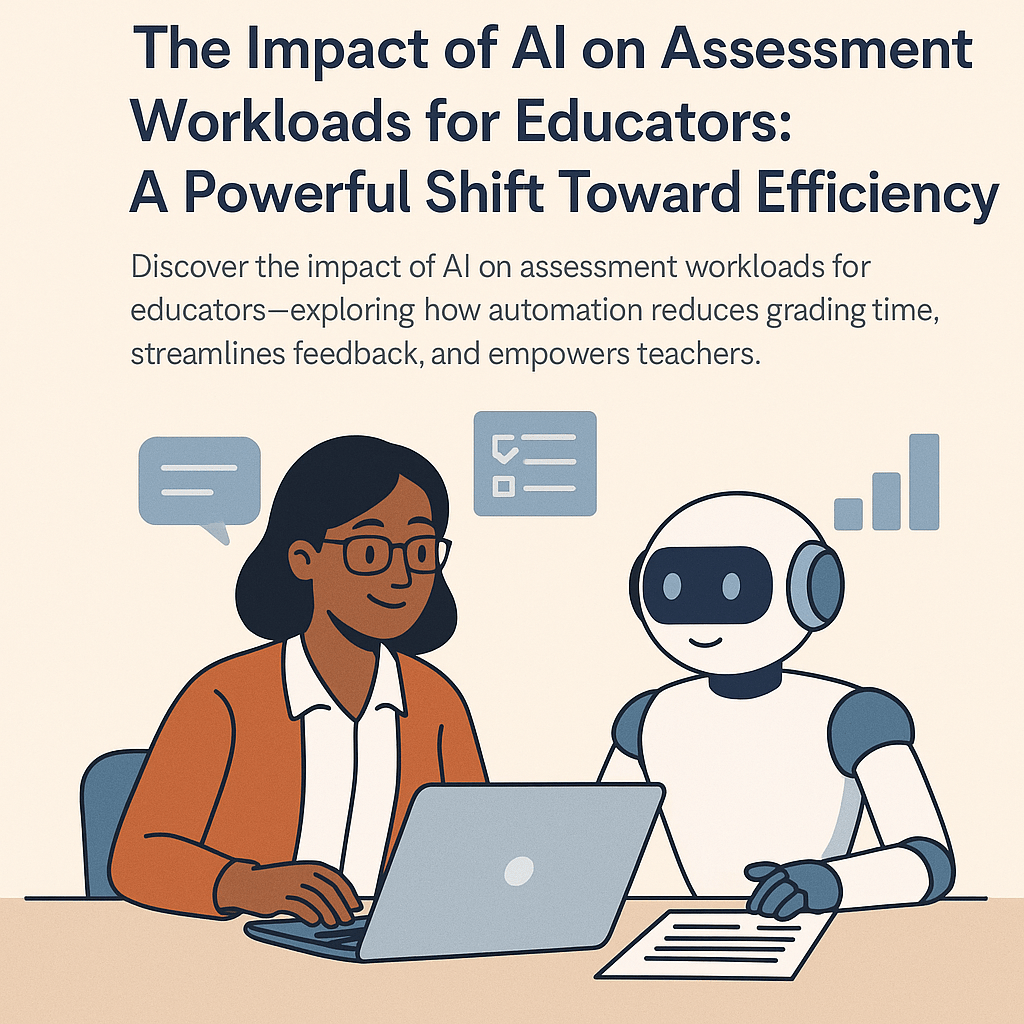
The AI impact on assessment workloads for educators is more than a technological trend—it’s a lifeline for overburdened teachers. From instant grading tools to intelligent feedback systems, AI is transforming how educators manage assessments, providing new opportunities to reclaim time, improve quality, and focus more on teaching than on paperwork.
As educational institutions adopt AI-powered systems, a clear shift is occurring: from manual, repetitive tasks to streamlined, data-rich processes.
The Growing Pressure on Educators
Educators worldwide are experiencing increased demands:
- Larger student cohorts
- More diverse learning needs
- Higher expectations for feedback and assessment personalization
Traditional assessment methods—manual grading, rubric alignment, and feedback delivery—can consume 30–50% of a teacher’s time, especially in writing-intensive or competency-based subjects.
This has led to stress, burnout, and reduced time for pedagogical innovation.
Enter AI: A Game-Changer for Assessment
AI-powered assessment tools now help educators with:
- Automatic grading of objective questions (MCQs, true/false, fill-in-the-blank)
- AI-assisted scoring of subjective tasks (essays, reflections, coding problems)
- Instant feedback generation based on rubric-aligned learning objectives
- Student progress dashboards and analytics
This not only reduces assessment workloads but also enhances consistency and transparency.
Real-World Example: Essay Grading with AI
Imagine a teacher handling 120 student essays. Traditionally, this might take 20–30 hours. With an AI writing assistant:
- Essays are pre-analyzed for grammar, structure, and coherence
- AI flags weak arguments or off-topic content
- The teacher receives suggested scores and feedback drafts
- Final review and adjustments are done in minutes per essay
This cuts grading time by more than half while preserving the educator’s oversight.
You can explore related solutions through educator training at The Case HQ Courses Page, which features modules on feedback automation and responsible AI integration.
Key Benefits of AI for Educator Workload
| Benefit | Description |
|---|---|
| Time Savings | Automates routine grading and feedback |
| Scalability | Manages large cohorts without sacrificing quality |
| Consistency | Reduces variability in grading, improves fairness |
| Real-Time Feedback | Students receive feedback instantly, improving learning flow |
| Data-Driven Insights | Teachers make decisions using performance analytics |
Educators trained to use these tools can significantly reduce their assessment load without compromising educational integrity.
Common AI Tools Supporting Educators
- Auto-grading engines for quizzes and coding tasks
- LLM-based writing evaluators for subjective assessment
- Adaptive learning platforms that track competency mastery
- Smart feedback generators aligned to institutional rubrics
At The Case HQ, courses help teachers upskill in using these tools ethically and effectively.
Challenges and Considerations
Despite the efficiency, AI adoption in assessment must be thoughtful:
- Loss of Nuance: AI might overlook creativity, emotional tone, or unique thinking unless tuned properly.
- Bias Risks: Poorly trained models can reflect biases in feedback or grading.
- Transparency: Students and educators must understand how AI-generated scores are derived.
- Tech Dependence: Over-reliance on AI may disconnect teachers from the evaluation process.
To address these concerns, The Case HQ promotes human-AI collaboration, where AI does the heavy lifting, but educators retain ultimate control and ethical responsibility.
Educator Empowerment: Reinvesting Time
By reducing assessment workload, AI enables teachers to focus more on:
- Mentoring and coaching
- Designing creative assessments
- Supporting struggling students
- Engaging in professional development
- Collaborating with peers
Rather than replacing educators, AI frees them to engage more deeply with students and pedagogy.
The AI impact on assessment workloads for educators is one of the most promising advancements in the modern classroom. By automating repetitive tasks and providing intelligent insights, AI allows teachers to regain valuable time—without sacrificing quality or fairness.
To explore how AI can support your assessment practices, visit https://thecasehq.com/ and discover hands-on training in feedback automation, assessment design, and ethical AI use.
https://thecasehq.com/the-impact-of-ai-on-assessment-workloads-for-educators-a-powerful-shift-toward-efficiency/?fsp_sid=2549
Comments
Post a Comment